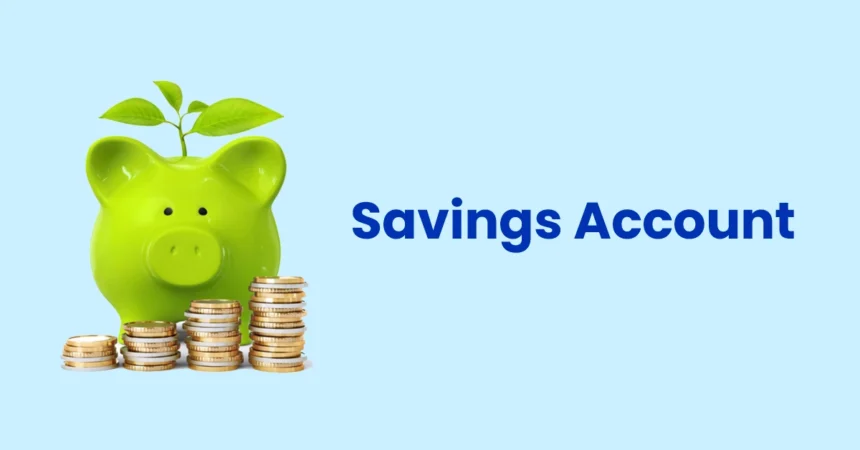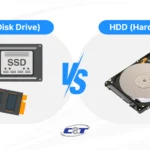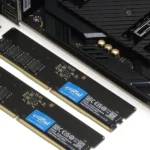I have a question for you. Where are your hard-earned savings kept? The answer is well-known to millions of people: a typical savings account at a big, conventional bank connected to their main checking account. It feels secure. It’s convenient. It has a sense of accountability.
However, what if I told you that this prudent decision is probably one of your worst financial errors to date? What if I told you that this “safe” savings account is steadily declining in value and losing money every day? What if I told you that there is a straightforward, just as safe substitute that could earn you hundreds or even thousands of dollars more annually with virtually no work?
Moving your money from a traditional savings account to a high-yield savings account is the single greatest “quick win” available in personal finance today, I can say with confidence as a financial writer with over ten years of experience helping people optimize their finances. The difference is that noticeable, that instantaneous, and that significant; it is the monetary equivalent of switching from a dial-up modem to high-speed fiber optic internet.
This is not a manual for pursuing intricate financial products or hazardous investments. This comprehensive guide, which is over 4,000 words long, explores the safest, smartest, and most efficient way to save money. We’ll debunk the myths about online banks, explain the power of APY, and give you a detailed guide on how to locate, open, and make the most of a high-yield savings account. Get ready to earn actual, significant returns on your savings rather than just pennies.
The Silent Thief: Why Your Present Savings Account Isn’t Working for You
The conventional brick-and-mortar savings account has been the standard choice for decades. The large bank names we see on every corner are ones we trust. The issue? The cost of that convenience and trust is high and frequently unseen.
Average APY’s Horrible Reality
The Annual Percentage Yield (APY) is the primary indicator of any savings account. With compound interest taken into account, this is the actual rate of return you receive on your investment over the course of a year.
The national average annual percentage yield (APY) for a traditional savings account as of mid-2025 is a pitiful 0.10% or less. Let’s consider that:
Over the course of a year, you will earn $10 in interest if you have $10,000 in a traditional savings account with a 0.10% APY.
Not even a few high-end coffees could be purchased with that amount. It’s a rounding error. The bank is not actually making a return; this is merely a symbolic gesture.
The Fight Against Inflation
Let’s now present inflation, the true antagonist of this tale. The rate of general price increases for goods and services that results in a decline in purchasing power is known as inflation. Your money must increase by at least 3% in a given year if the inflation rate is 3% in order to retain its current value.
Your money isn’t growing when inflation is 3% and your savings account is only making 0.10%. Every year, it actively loses 2.9% of its purchasing power. Your “safe” savings are gradually and silently melting away, much like an ice cube left on the counter on a warm day.
The Answer: A Novel Type of Savings Account
The high-yield savings account (HYSA) is the protagonist of our tale. This is just a savings account that offers you a significantly higher interest rate; it is not a different kind of product in terms of function or safety.
So, what is the source of these astounding rates? The business model contains the majority of the answer. Online-only banks or the online branches of bigger financial institutions provide the majority of the top HYSAs.
The Reasons Online Banks Can Increase Your Pay:
- Low Overhead: They are exempt from paying for the thousands of physical branches, the corresponding real estate expenses, or the substantial number of tellers and employees needed to operate them.
- Deposits: Their main objective is to draw in client deposits, so they compete fiercely for your business by offering competitive interest rates.
- Effective Operations: They use technology to make banking more efficient and streamlined.
They give you a much higher annual percentage yield (APY) in exchange for a large amount of the money they save on overhead.
A Tale of Two Savings Accounts: The High-Yield Difference
Let’s go back to our example of saving $10,000. Competitive high-yield savings account rates are currently ranging from 4.50% to 5.50% APY as of mid-2025. Let’s use 4.75% as a precaution.
$10,000 in a Traditional Savings Account (0.10% APY): Over the course of a year, you make $10.
- $10,000 in a High-Yield Savings Account (4.75% APY): Over the course of a year, you make $475.
That is a significant difference. For doing nothing more than picking a better home for your money, that is 47.5 times more money. You could use the $465 difference to increase your vacation fund, pay a bill, or just keep compounding and growing. The traditional account would have earned you just over $50 in interest over five years, while the high-yield savings account would have earned you almost $2,600, assuming rates remain the same.
The decision becomes very obvious. You are actively rejecting free, risk-free money when you keep your money in a low-yield savings account.
Dispelling the Myths: Is It Safe to Open a High-Yield Savings Account?
For the majority of people, this is their top query and worry. There must be a catch if a bank I’ve never heard of offers rates that are so much higher than those of the megabank nearby, right? It must be more dangerous.
This is categorically untrue.
The Influence of NCUA and FDIC Insurance
The Federal Deposit Insurance Corporation (FDIC) for banks and the National Credit Union Administration (NCUA) for credit unions are the two most significant acronyms in banking.
- What it is: If an FDIC-insured bank or savings association fails, you are protected from losing your insured deposits by the FDIC, an independent agency of the US government.
- The limit of coverage: Up to the insurance limit, your deposits are covered dollar for dollar by FDIC insurance. This cap is set at $250,000 per depositor, per insured bank, for each account ownership category as of 2025.
- For you, this means: Your money is 100% safe as long as you select an online bank that is insured by the FDIC and maintain your balance at or below the $250,000 limit. It is protected to the same extent by the government as it would be at the biggest physical bank in the nation. The FDIC’s BankFind Suite tool allows you to check the FDIC status of any bank.
Technology and Security
Technology and security are the lifeblood of online banks. To safeguard your data and finances, they make significant investments in fraud monitoring, multi-factor authentication, and cutting-edge encryption. Compared to the expansive, legacy systems of older institutions, their targeted digital infrastructure may be more secure in many respects.
There is no risk in the “catch.” Simply put, the “catch” is that you must feel at ease with a banking experience that prioritizes digital technology.
The Best Uses for a High-Yield Savings Account: The Perfect Home for Your Financial Objectives
An investment account intended for long-term, aggressive growth is not a high-yield savings account. It’s a tool for managing finances. Its goal is to provide a return that greatly exceeds inflation while protecting your liquid, safe money. It is the ideal location for your short- to medium-term financial objectives.
Your Financial Foundation: The Emergency Fund
Three to six months’ worth of necessities should be saved in your emergency fund in case of unforeseen circumstances such as a major home repair, a medical emergency, or a job loss. This money must be both accessible and safe.
- Why a HYSA Is Ideal:An emergency fund is best placed in a high-yield *savings account*. It’s liquid (you can access the funds in 1-3 business days), fully safe (FDIC-insured), and while it waits, it lets your emergency fund grow and keep up with inflation. Every day, the value of an emergency fund sitting in a conventional *savings account* decreases.
Sinking Funds: Preventive Saving for Major Objectives
A sinking fund is a savings plan in which you set aside a certain sum of money every month for a predictable future expense. When a big purchase comes up, it keeps you from going into debt or blowing your budget.
- Why a HYSA Is Ideal: Opening several HYSAs or using a single HYSA that enables you to create “buckets” or “sub-accounts” for various objectives is something you can (and should) do. For instance:
- Vacation Fund: Setting aside $200 per month for a trip.
- Holiday/Gift Fund: Setting aside $50 per month to cover end-of-year expenses; * Home Repair Fund: Setting aside $100 per month for unavoidable maintenance; and * New Car Fund: Setting aside $400 per month for a down payment.
By keeping these funds in a high-yield savings account, the interest earned will contribute a modest but significant boost to each of your objectives.
The Stash for the Down Payment
The goal of saving for a down payment on a house takes time. You want the money to grow, but you also need it to be secure and shielded from market swings.
- Why a HYSA Is Ideal:For a down payment fund, a high-yield *savings account* offers the ideal balance of growth and safety. Without the stock market risk, you receive a competitive return. Your down payment might be halved if you were hoping to purchase a home within two years and the market crashed. It is growing steadily and safely in a HYSA.
Your Comprehensive Guide to Selecting and Opening the Greatest High-Yield Savings Account
Are you prepared to switch? In less than fifteen minutes, you can finish the easy process from the comfort of your couch.
Step 1: Evaluate the Leading Candidates
It’s crucial to compare the best deals available right now because rates and features vary. Start by using reliable financial comparison websites.
- Search for: * Competitive APY: This is the primary event. Seek out a rate that is substantially greater than the average for the country.
- No Monthly Fees: The best accounts don’t charge monthly maintenance fees, which would reduce your profits.
- No or Low Minimum Balance: Opening an account and avoiding fees shouldn’t require thousands of dollars.
- FDIC Insurance: This cannot be negotiated. Check the bank’s website to confirm it.
- Excellent User Experience and Customer Service: Examine reviews of the bank’s customer service and mobile app.
Step 2: Compile Your Data
In order to prevent financial crime, federal law requires you to provide certain basic information when opening a bank account. Prepare these:
- Date of Birth * Social Security Number * A legitimate government-issued identification document (such as a driver’s license)
- Your physical address * Your phone number and email address
Step 3: Finish the online application.
Click “Open an Account” on the bank’s website of your choice. The simple online application typically takes five to ten minutes to complete. You will accept the terms of the account and enter your personal information.
The fourth step is to fund your new account.
The most crucial step is this one. Your new high-yield savings account must be linked to an external bank account, typically your primary checking account. You will require your external account’s account number and routing number.
- Make a down payment: To transfer your current savings over, you can start a one-time transfer.
- Configure Repeating Transfers: This is crucial! Establish a regular, automatic transfer from your checking account to your HYSA each payday to help you develop the habit of saving. This automatically saves you money.
Step 5: Close Your Previous Savings Account (Suggested but Optional)
Consider closing your previous, low-yield savings account after your money has transferred successfully and you’ve configured your automatic transfers. This streamlines your financial life and eliminates the temptation to habitually hold money in a low-performing account.
The Details: Comprehending a Few Crucial Ideas
Even though HYSAs are straightforward, there are a few words and ideas you should be aware of.
- Variable APY: Your savings account‘s APY is variable, which means it may and may not fluctuate. The Federal Reserve’s actions have an impact on rates. HYSA rates typically increase in tandem with Fed rate hikes. HYSA rates typically decrease when they do so. Nonetheless, competitive HYSAs will nearly always provide a rate that is significantly better than that of conventional accounts.
- Withdrawal Limits (An Outdated Concern: Regulation D): Previously, you could only take out six different kinds of withdrawals from a *savings account* each month due to a federal regulation known as Regulation D. Since the Federal Reserve removed this regulation, the majority of internet banks no longer impose this cap. Checking the bank’s specific policy is always a good idea, but generally speaking, it is no longer an issue.
- Taxes on Interest: You must pay taxes on the interest you earn in your savings account. If you have earned more than $10 in interest at the end of the year, your bank will send you a 1099-INT form. This must be included on your tax return. Don’t let this stop you—having to pay taxes on interest earned is a good problem!
Give up settling. Begin making money. You Have a Choice.
A number of small, deliberate choices will shape your financial future. One of the most important decisions you can make—and one of the simplest to correct—is where to keep your cash savings.
Continuing to keep your hard-earned money in a traditional savings account is a choice. Accepting a nearly zero return is a decision. The decision is to allow inflation to prevail. Month after month, year after year, it’s a decision to leave free money on the table.
You can also choose to do something else. Opening a high-yield savings account can take up to 15 minutes of your day. You have the option to select a platform that values and utilizes your money. You have the option to combat inflation and watch your savings increase with significant, observable returns.
You own this money. Your future lies in this. The time has come to invest your savings in an account that will work as hard as you do.
Reference:
https://banks.data.fdic.gov/bankfind-suite/bankfind
https://www.nerdwallet.com/best/banking/high-yield-online-savings-accounts
https://www.bankrate.com/banking/savings/best-high-yield-interests-savings-accounts









